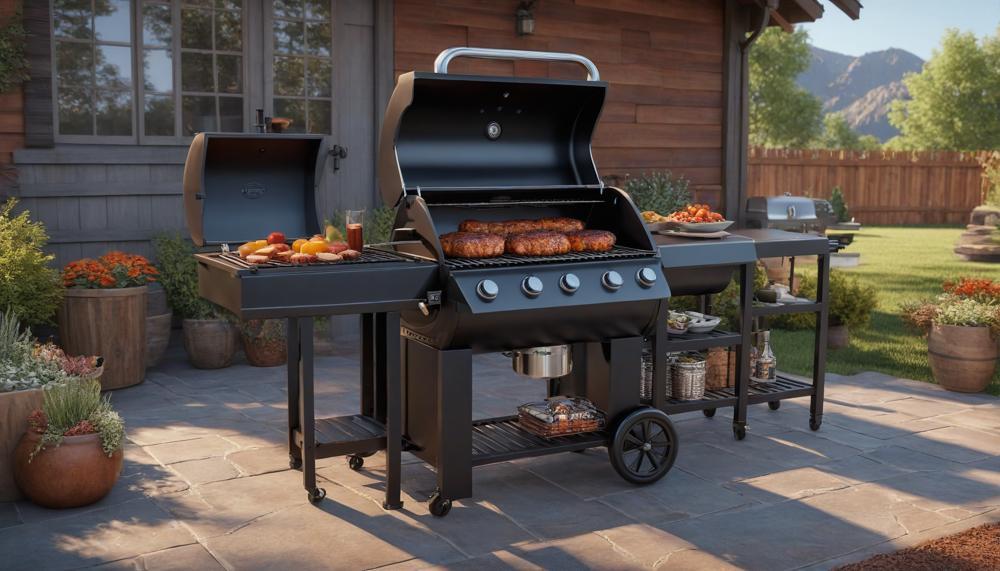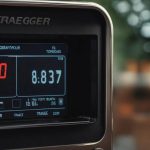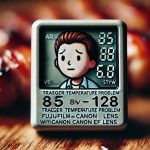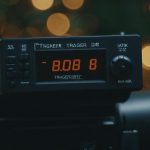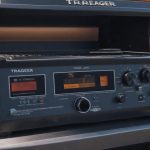Did you know that nearly 30% of pellet grill owners report issues with their grills not reaching the set temperature at some point in their cooking experience? This statistic highlights a common frustration among users of Traeger grills, a popular brand in the pellet grill market.
Whether you’re looking to perfect your smoked brisket or just aiming for properly grilled burgers, encountering temperature stability issues can turn a pleasant barbecue into a troubleshooting session.
In this blog post, we will address the key factors contributing to this problem and provide practical advice on how to resolve them. Here’s what we’ll cover:
- Understanding the Design: How the mechanics of Traeger grills influence their heating performance.
- Common Culprits: Identifying typical reasons why your Traeger might be falling short of the desired temperature.
- Step-by-Step Solutions: Clear and straightforward steps to troubleshoot and fix temperature issues.
- Maintenance Tips: Regular maintenance practices to keep your Traeger grill in optimal condition.
Stay tuned as we break down these topics, offering you the knowledge you need to get your grill functioning at its best again. Whether you’re a seasoned grill master or a weekend warrior, this guide will help you overcome these heating hurdles to ensure your next barbecue is nothing short of a success.
Contents
Hot Rod Deterioration
Recognizing the signs of hot rod deterioration in your Traeger grill is key to maintaining an optimal cooking experience. Below are detailed indicators and consequences of this common issue:
Signs of Hot Rod Deterioration:
| Difficulty Starting the Grill | If your grill often refuses to start, it’s likely that the hot rod, essential for igniting the pellets, isn’t heating up properly due to wear or damage. |
| Fluctuating Temperatures | A degrading hot rod may not consistently heat the pellets, leading to temperature swings that can affect your cooking precision. |
| Failure to Reach Desired Temperature | When the hot rod fails, it might not activate the pellets effectively, causing the grill to remain cool and not heat up to the set temperature. |
Impact on Grill Temperature:
| Uneven Heating | A faulty hot rod can result in uneven heat distribution within the grill, which can lead to partially cooked meals or varied cooking times. |
| Low Heat Levels | Without a functioning hot rod, the grill might not reach the temperatures needed for certain recipes, disappointing those keen on perfect BBQ dishes. |
| Inconsistent Cooking | Erratic temperatures can spoil delicate foods that require steady heat, affecting both the flavour and texture of your cooked items. |
Hot rod deterioration impacts more than just the operational status of your grill; it compromises your ability to consistently produce delicious, well-cooked meals. From steak that’s charred on the outside and raw in the middle, to veggies that are too crisp or too mushy, the pitfalls are endless when temperature control is lost. Hence, keeping an eye on these signs and addressing them promptly can save a lot of culinary heartache.
Low-Quality Pellets
| Sign | Explanation | Potential Impact |
| Temperature instability | Pellets of low quality may cause your grill to experience significant temperature swings or even shut down during cooking. | Leads to unevenly cooked food, with some parts undercooked and others overcooked. |
Not Enough Pellets in the Grill
When your Traeger grill struggles to reach the desired temperature despite having an ample supply of pellets, the problem often lies not with the quantity but with the quality of the pellets themselves.
Here’s a deeper look into this issue: Poor pellet quality is a prime suspect behind temperature inconsistencies in pellet grills.
Wood pellets that are improperly manufactured or stored can absorb moisture, leading to inefficient burning that struggles to maintain high temperatures.
Blown Fuses
Answer: Blown fuses in a Traeger grill can be a frustrating hiccup, especially when you’re keen to start grilling. Several typical reasons might lead to this issue, and understanding them can help you prevent such mishaps in the future.
One primary cause is loose power cords. If the cord isn’t securely connected, it can create unstable electric currents that overload and pop the fuse. Another frequent troublemaker is the hot rod. If it’s damaged, it struggles to heat properly, drawing excessive current and causing the fuse to blow. The auger motor, which helps move the pellets, can also be at fault if it’s malfunctioning due to poor connections or internal damage.
Here’s a simple guide on checking these components to ensure they function correctly, thus avoiding the nuisance of a blown fuse:
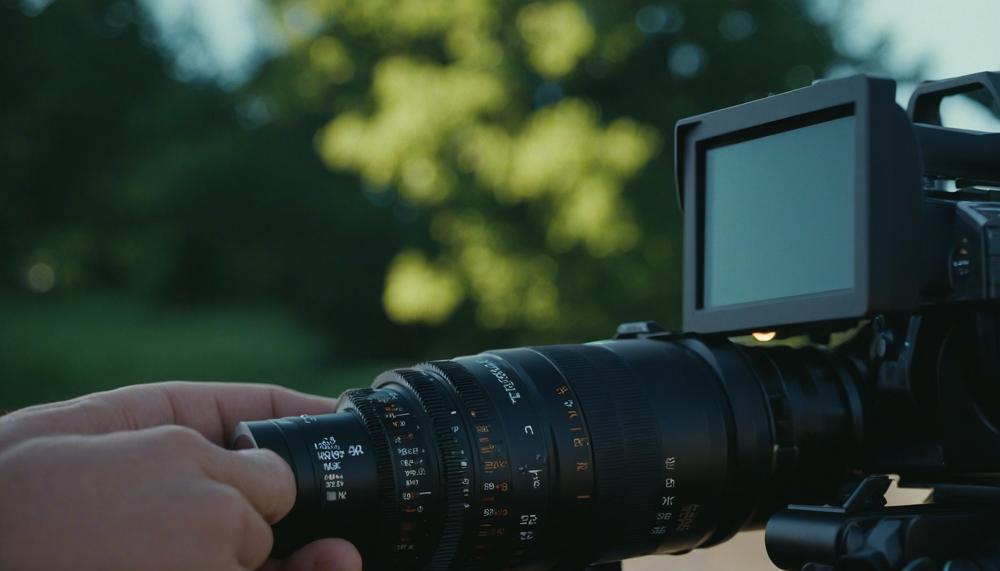
| Component | Issue | Preventive Measures |
| Power Cord | Looseness or Damage | Ensure it’s firmly plugged in and replace if worn out. |
| Hot Rod | Internal Damage | Inspect for wear and replace if faulty. |
| Auger Motor | Poor Connection/Function | Check connections and motor health; replace if necessary. |
Additionally, always turn off your grill before inspecting these parts. This safety step prevents any accidental electrical issues during your checks. Also, look out for signs like excessive smoke which might indicate underlying power problems needing attention.
Too Much Debris in the Firepot
Too much debris in the firepot of your Traeger grill can significantly affect its temperature, hindering your ability to cook delectable BBQ meals effectively. Here’s a detailed breakdown of how excessive debris impacts the grill’s temperature:
| Issue | Consequence | Explanation |
| Blocked Airflow | Decreased Temperature | Debris restricts the flow of air necessary for keeping wood pellets alight, thus reducing the grill’s ability to maintain a consistent high temperature. |
| Heat Absorption | Insulation Effect | Ash and charred remnants act as insulators. They absorb and trap heat that should otherwise elevate the firepot’s temperature, affecting cooking efficiency. |
| Auger Clogs | Temperature Fluctuations | Accumulated debris can interfere with the auger’s function of feeding pellets at a consistent rate, causing irregular temperature and potentially uneven cooking. |
| Uneven Burning | Inconsistent Heat | Buildup creates hot spots and cooler zones within the firepot, leading to uneven heating and potential undercooking in parts of the food. |
To combat these issues, ensure regular maintenance of your firepot by removing ash and debris post-cooking sessions.
Moisture in the Grill
Moisture plays a pivotal role in how your Traeger grill regulates temperature. When moisture enters the grill, primarily through damp pellets or ambient conditions, it impacts the grill’s ability to maintain consistent heat.
| Impact | Explanation |
| Combustion Efficiency | Moisture lowers the ignition capability of pellets, reducing temperature consistency. |
| Heat Distribution | Evaporating water can cool parts of the grill unevenly, affecting cooking outcomes. |
| Pellet Consumption | More pellets may be required to maintain desired temperatures, increasing operational costs. |
| Maintenance Issues | Moisture can cause quicker degradation of grill parts, leading to potential extra maintenance. |
Broken Induction Fan
If your Traeger grill isn’t hitting the right heat levels, several factors could be at play, but a faulty induction fan is a common culprit. Here’s a straightforward guide to troubleshoot and check if the induction fan is the issue:
Step-by-Step Troubleshooting:
Check for Obvious Signs of Fan Failure:
- Listen for irregular fan noises which could indicate blockages or mechanical failure.
- Observe if the fan blade is spinning during operation; a stationary fan blade while the grill is on is a clear sign of an issue.
Inspect for Power Issues:
- Ensure that the fan’s power connections are secure. A loose connection could disrupt fan operation.
- Use a multimeter to check for electrical continuity. If there’s no continuity, the fan might need replacing.
Look for Physical Obstructions:
- Remove any debris or pellet dust that may be clogging the fan blades.
Test the Fan’s Operation:
- Briefly activate the grill to check if the fan kicks in. No movement from the fan could point to a need for replacement.
Using a Table for Visual Aid:
| Issue | Check | Indication |
| Fan Noise | Listen during operation | Noises suggest blockages or failures |
| Fan Movement | Observe fan blades | Non-spinning blades mean issues |
| Power Connection | Verify connections, use multimeter | Loose or no continuity suggests problems |
| Physical Blockage | Inspect and clean blades | Debris indicates cleaning needed |
Conclusion
Understanding and addressing the challenges that prevent your Traeger grill from reaching the desired temperature can transform your grilling experience from frustrating to flawless. Throughout the article, we explored several key factors that may be causing your grill to underperform, including issues like hot rod deterioration, the use of low-quality pellets, and obstructions in the firepot, among others.
Each of these problems can significantly impact the grill’s ability to heat properly, leading to uneven cooking and less than satisfactory meal outcomes.
Equipped with the right knowledge and maintenance tips, you can ensure that your Traeger operates efficiently. Regular checks and cleaning of key components such as the hot rod, induction fan, and firepot, along with ensuring the use of high-quality pellets, are critical steps. Also, be vigilant about keeping your grill and pellets dry to avoid moisture-related issues that can dampen the heat.
By proactively maintaining your grill and addressing any issues promptly, you pave the way for not only enhanced performance but also the joy of cooking that comes with it.

